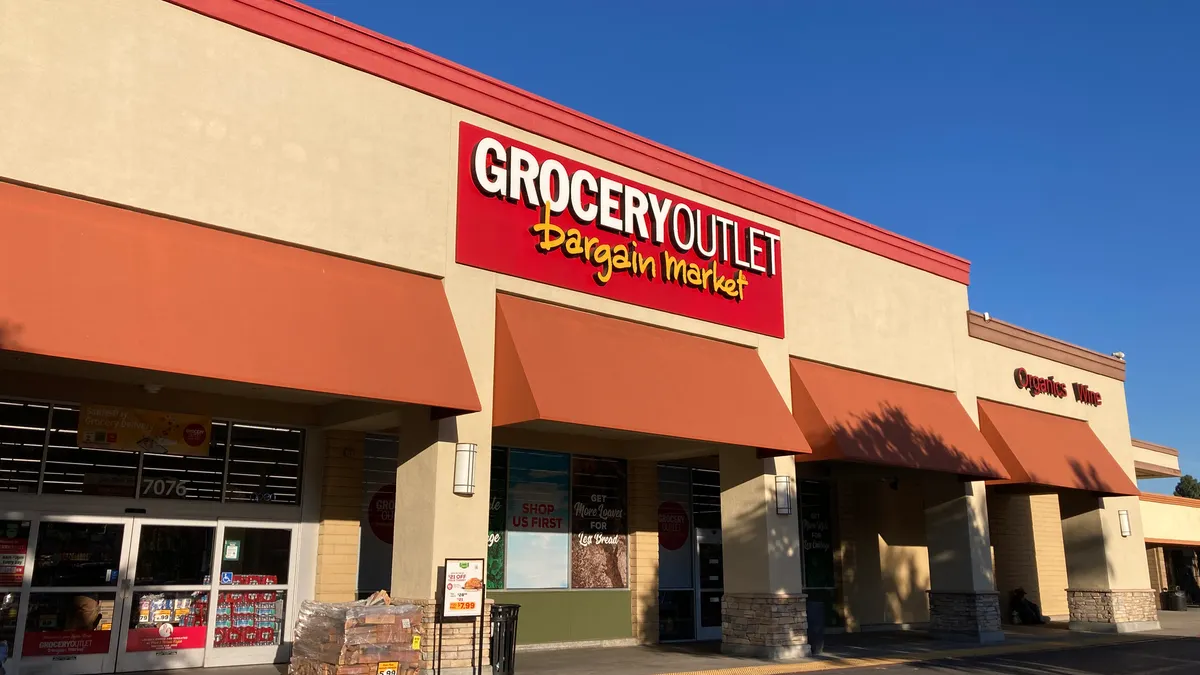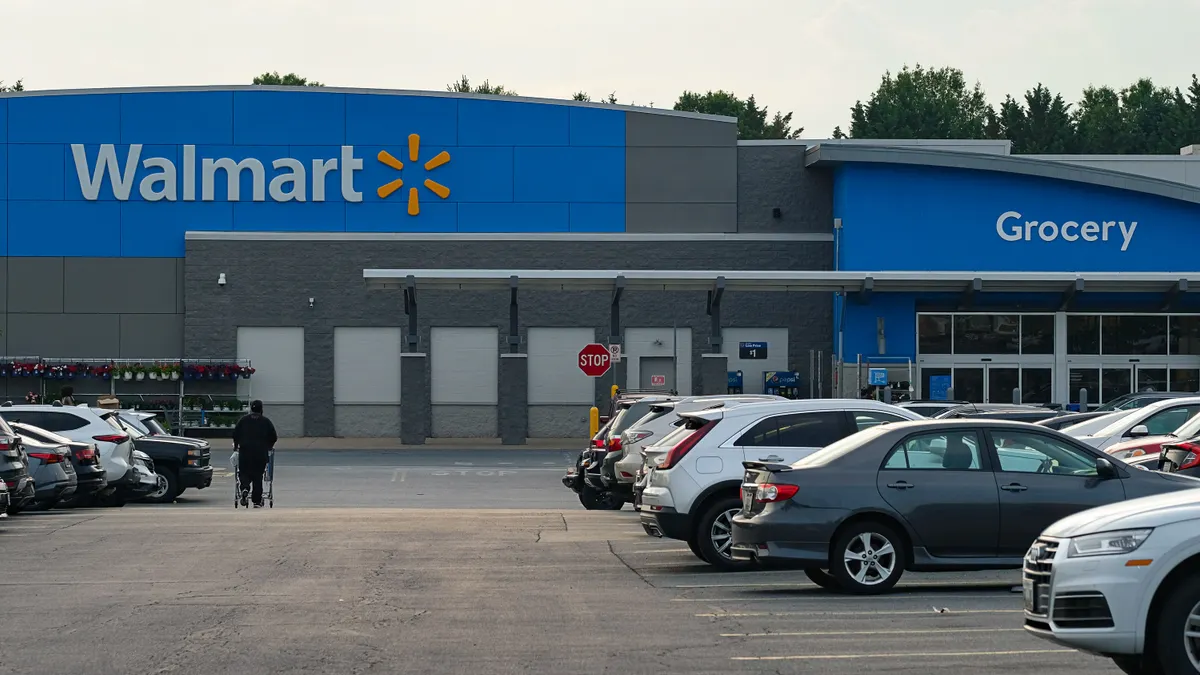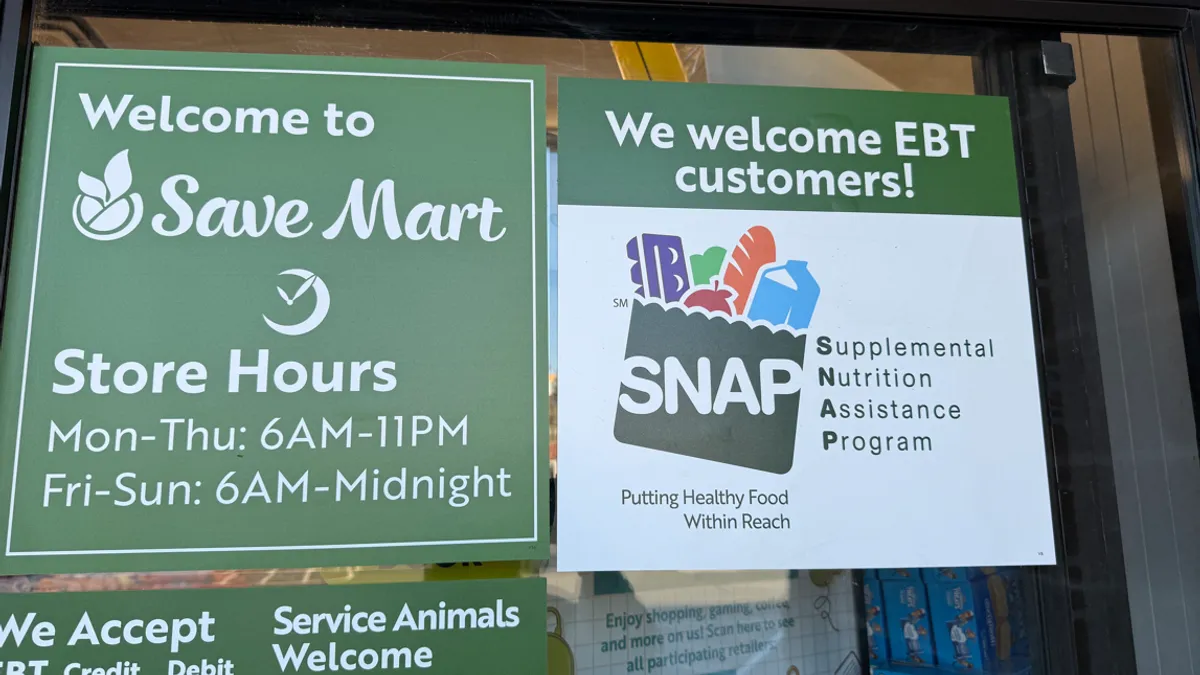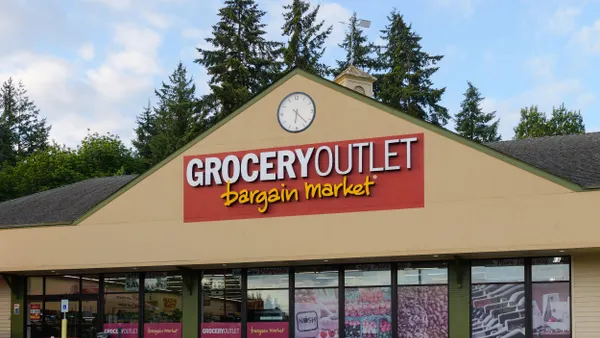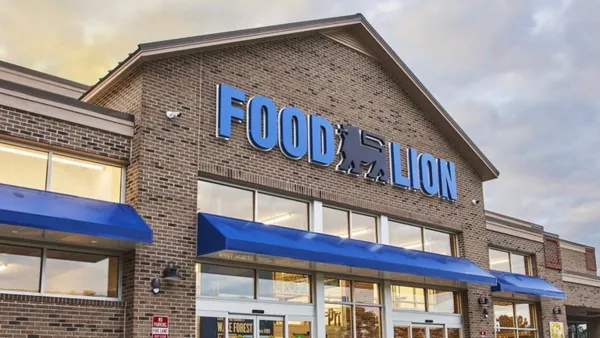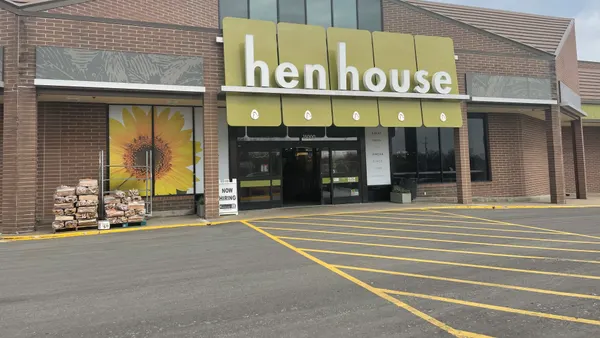Dive Brief:
- Grocery Outlet saw its net sales increase 4.5% year over year, to $1.18 billion, and its comparable-store sales increase just over 1% during its second quarter.
- For the quarter, which ended June 28, Grocery Outlet recorded net income of $5 million.
- Grocery Outlet President and CEO Jason Potter said the discounter “made important progress” during Q2 on the four strategic initiatives it unveiled earlier this year to turn around its financial position.
Dive Insight:
As Grocery Outlet recovers from the financial and operational fallout of a botched technology transition in 2023, it’s seeing improvements in its inventory availability and visibility, Potter said during the second-quarter earnings call on Tuesday.
“[W]e’ve seen a material in-stock improvement on our top 200 items that’s driving roughly 200 basis points of comp lift,” Potter said.
In Q2, Grocery Outlet completed the rollout of its real-time order guide, which has helped improve inventory visibility and in-stocks, Potter told investors, noting that feedback from independent operators who have used the guide has been “overwhelmingly positive.” In the fall, the company will roll out a new arrival guide, which will expand the ordering window for items.
Potter noted that Grocery Outlet is also rebalancing store growth “towards a healthy mix of core versus new markets, adjusting our internal returns framework, developing more robust site selection criteria and testing several key commercial pilots to drive our performance.”
Grocery Outlet has started rolling out to a group of pilot stores features it has tried out at a location in Oakland, California, Potter said. The test store includes a new layout, signage, storytelling and merchandising, and a new fresh category ordering and forecasting tool, Potter said. The discounter is also introducing tools and training focused on fresh meat and produce after seeing improved sales at the Oakland pilot linked to product freshness for both categories, Potter said.
As the discounter continues its goal to attract and retain top talent, Potter noted that the company recently hired Matt Delly as its chief merchandising officer. Delly previously was a consultant for Chedraui USA and chief merchandising officer at 99 Cents Only Stores, according to his LinkedIn profile.
Grocery Outlet said it substantially completed its restructuring plan in Q2. That plan, which the discounter unveiled alongside its Q4 results, included terminating certain unopened store leases, discontinuing store development plans, canceling some capital-intensive warehouse projects and reducing headcount.
The restructuring, which aims to improve the discounter’s long-term profitability, cash flow generation and optimize the footprint of new store growth, cost roughly $63 million.
Grocery Outlet recorded its sixth consecutive quarter of achieving over $1 billion in net sales. The discounter attributed the net sales growth to new store sales, the increase in comp-store sales and the Easter holiday happening later this year compared to last year. Comp-store sales grew mainly due to an increase in transactions, which offset a slight dip in the average transaction size. This quarter marked the first time Grocery Outlet factored stores from the acquisition of United Grocery Outlet last year into its comp-store sales.
During Q2, Grocery Outlet opened 11 stores and closed two, ending the quarter with 552 stores across 16 states. Potter said on the earnings call that Grocery Outlet is on track to hit its goal of opening at least 33 stores this year.
Since 2018, Grocery Outlet has nearly halved its debt, according to a presentation. Meanwhile, its adjusted EBITDA has grown from $143.4 million in 2018 to $249.1 million. Grocery Outlet shared that its net leverage — a metric of a company’s financial risk — has significantly improved.
Grocery Outlet reaffirmed its full-year guidance, which forecasts the company will achieve between $4.7 billion to $4.8 billion in net sales and see a comp-store sales increase between 1% to 2%.



